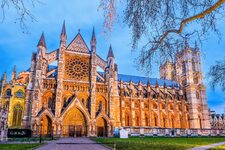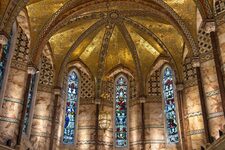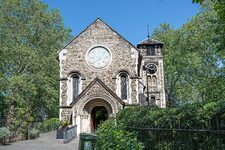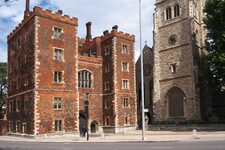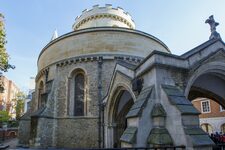Westminster Abbey: Journey to the Heart of London's Timeless Jewel
Nestled in the heart of the British capital, Westminster Abbey is not just another religious building. It embodies the pantheon of English history and culture, bearing witness to centuries of social gatherings, sacred ceremonies, and events that have shaped the destiny of the United Kingdom. From its Gothic splendor to its contemporary significance, a visit to Westminster Abbey is a journey through time, revealing layers of history that still inspire awe and reflection today.
Architecture That Defies Time
Stepping into Westminster, one is immediately struck by the architectural exuberance of the Abbey. Its foundations date back to Norman times, with a history spanning over a thousand years. The majestic towers, soaring vaults, and flying buttresses are not merely structural elements: they narrate tales of a bygone era, architectural feats that continue to defy time.
The Abbey's English Gothic style is a feast for the eyes, with features that seem to reach for the heavens. The attention to detail is second to none, with each sculpture, stained glass window, and delicate column having its own story, often intricately linked to the royalty and eminent personalities of the country.
Coronation Site: A Stage of Royal Majesty
Westminster Abbey has witnessed the coronation of English monarchs since William the Conqueror in 1066. This tradition continues to imbue a sense of historical continuity and ceremony that is almost tangible as one walks down the central aisle. The coronation chair, known as King Edward's Chair, is one of the most revered pieces in the Abbey's entire collection.
It is within this setting that British royalty has been inducted, amid pomp and celebration that often marked decisive turns in the country's history. Each coronation, each solemn service speaks of the symbiotic relationship between the monarchy, the church, and the people, underscoring the Abbey's importance as a site of royal legitimacy.
Eternal Resting Place of Legends
Westminster Abbey is not just a place of worship and ceremony; it is also where some of the most famous figures in British history are laid to rest. Scientists, writers, musicians, and illustrious politicians are buried alongside royalty, creating a pantheon of characters who have shaped British culture in various ways.
Visitors can reflect at the graves of individuals such as Charles Darwin, Geoffrey Chaucer, or Isaac Newton, pondering the scope of their contributions. Poets' Corner is particularly attractive to literature enthusiasts, with tributes to legendary writers such as William Shakespeare, Jane Austen, and the Brontë siblings, to name a few.
A Trove of Artistic and Historical Treasures
The interior of Westminster Abbey is a treasure trove of artwork and historical objects, each reflecting different eras and artistic styles that have spanned the ages. Magnificent frescoes, exquisite paintings, ancient books, and religious artifacts are just some examples of what awaits visitors.
Among the most precious items are the Westminster Retable, known as one of England's oldest paintings, and the Sancta Sanctorum, a reliquary that continues to fascinate and attract historians and visitors from around the world.
The Musical Tradition: A Transcendent Experience
The Westminster experience would not be complete without mentioning its rich musical tradition. The Abbey's choir, comprising both children's and adults' voices, is renowned worldwide, perpetuating a tradition of liturgical singing that dates back to the 14th century.
Attending a service with live music can be a moving experience, with hymns and sacred songs resonating through the vaults, creating a moment of spiritual connection, regardless of personal faith. The concerts held here are not-to-be-missed events, often featuring works by famous composers played in an utterly inspiring setting.
Communion with Nature: The Abbey's Gardens
Westminster Abbey also offers communion with nature, an aspect often overlooked in traditional narratives. The Abbey's gardens, though less well-known, are a sanctuary for peace and reflection. The oldest among them, the Cloisters' garden, is a lush green space inviting contemplation.
Wandering through, one discovers a variety of plants and flowers, some dating back centuries. These gardens add a dimension of serenity and provide respite from the hustle and bustle of London, emphasizing the harmony between man and nature, even in the midst of a historic monument.
Contemplating Westminster Abbey, one cannot help but be moved by its living testament to British history. It is not merely a monument of the past but a vibrant place where past and present meet, converse, and continue to live through each carved stone, each stained glass window, and each silent tomb. Departing, one carries away not just images and knowledge, but also a deeper understanding of the culture and history that continue to shape our modern world.
